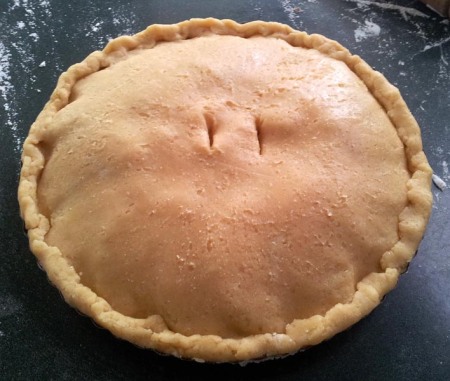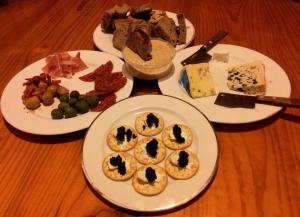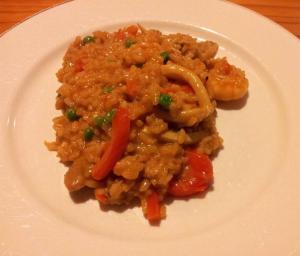This is one of those posts that runs the risk of pointing out the obvious, but then it wasn’t as obvious to me as perhaps it should have been…
I like to bake an apple and pear pie with very short pastry. I like it to be like a shortbread biscuit (only not quite as sweet). This means that the pastry is hard to roll out without it splitting and crumbling. And certainly getting it into the tin can be a challenge without breaking it. Usually I would flour the work top and roll it out to size. Once it’s thin and circular I’d roll it onto the rolling pin to bring it over to the tin, then roll it off the pin onto the tin. Inevitably I’d then have to go around fixing the splits.
The new technique is to use greaseproof baking paper the same way that adhesive stickers are lined with a non-stick backing.
First place down a square of baking paper. The place the chilled sphere of pastry on top (cold pastry is way easier to work with than unchilled). Place a second piece of baking paper over this. Roll out the pastry between the paper.
Of course you can check the size by placing the tin over what you’ve done. I found the rolling pin good for most of the rough work, then the whole thing can be smoothed with a gentle rubbing of the hands.
Peel the top layer of paper off, keeping it for the lid. Place the pastry in the pie tin with the remaining paper uppermost. This is easy to do because the pastry sticks to the paper while you carry it over.
Tease the paper away from the edges first then remove it from the centre. Then the pastry can be worked into all the nooks and crannies of the pie tin. Notice no splits at all!
After putting in the filling the same process is used for the lid. Roll the edges together to seal and add vent holes.
Couldn’t be easier.
Finally here’s the recipe for my pastry for those following along at home:
- 1.75 cups plain flour
- 0.5 cup self raising flour
- 185g butter
- 75g raw sugar
- 2 eggs
- 1tbsp milk
Sieve the plain and self raising flour together, add the raw sugar. Chop the butter into small cubes and work the mix through your fingers until you have the consistency of breadcrumbs. Whisk the eggs and milk together. Add to the mix and combine with the hands until it has all come together as a smooth ball. Divide into 60/40 spheres (for base and lid, respectively), wrap in plastic kitchen wrap and chill in the bottom of the fridge for 20min.
For the pie I use 2 green apples and 2 pears, some brown sugar, cinnamon and nutmeg. Bake for 50-60min 180C. Can also be partially baked for 40min the day before and then freshened up for 20min in the oven on the day.







 Posted by philw4rd
Posted by philw4rd 

























